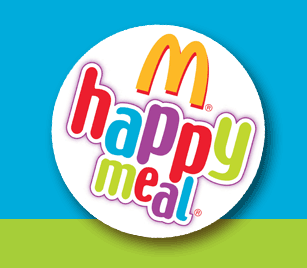Image Courtesy of Google Images
Weekly Overview1. What was your SMART goal? How did you do in achieving your SMART goal?
- My SMART goal: I will eat at least 4 servings (1/2 cup) of fruits or vegetables (or a mix) every day for the next 10 weeks.
- This was my best week yet falling short only once, and it was primarily because I really wasn’t that hungry and didn’t want to eat another serving of vegetables or fruit on top of my large dinner.
- I have found a really good system of balancing my servings throughout the day, starting with a good breakfast in the morning. I am usually not very hungry in the morning so I usually just eat some fruit before I begin my day.
- The only real challenge I faced was eating too big of meals and not wanting to add a serving of fruits or vegetables to simply meet my goal.
- I am still feeling about the same as the weeks prior, minus the stresses of the semester winding to an end. However instead of surrounding myself with comfort food this time around, I am instead going to resort to fruit!!
- I learned that this goal is very attainable, I have also learned some neat ways to incorporate fruits and vegetables into the types of meals that I usually eat.
- My challenges for this upcoming week are actually beginning to decrease because I am back in the swing-of-things with school. I now have some time to prepare meals and snacks the night before so I can receive the proper amount to fruit and vegetables that I am shooting for. For this week I plan to continue to do what I am doing and if all goes well, even exceed my goal.
Overview of Project
- My SMART goal: I will eat at least 4 servings (1/2 cup) of fruits or vegetables (or a mix) every day for the next 10 weeks.
- My smart goal remained the same throughout this project, the only exception was that I did not stop once I achieved my goal, I allowed myself to exceed it.
- The things that made me successful throughout this process were making fruits and vegetables easily available to myself. When I had them attainable, I found myself snacking on them instead of junk food with out even realizing it
- The biggest thing that got in the way was, in the beginning I didn’t do a very good job of keeping fruits and vegetables around the house and I ran out on a regular basis. Also, Thanksgiving and the Wisconsin deer-hunting season provided a few bumps in the road as well.
- I am going to continue to keep fresh fruits and vegetables around the house and easily accessible as healthy snacks. I believe this is a behavior that can become a habit in no time at all
- In the beginning I felt like I had a bet more energy during the day and slept a bit better at night, I then kind of hit a plateau and the feeling felt natural. However now I am tired and a bit irritated, but I think that is to be expected with the semester winding down.
- Through this process I learned that I can definitely change a personal behavior as long as I completely buy into it. By supporting the behavior and surrounding myself with the means of achieving this goal it was pretty easy for me to continue my path of success.
- I learned that behavior change is completely about truly embracing the change and doing your absolute best to support that change by surrounding yourself with a positive environment.
- I’m not quite sure how others benefited from my behavior change; maybe I was a bit less irritable. But as for the environment, I believe this change can make a significant impact because it greatly reduced the amount of garbage I produced by lowering the amount of processed and packaged foods I consumed. I also could use the remains of my excess fruits and vegetables as compost.
What recommendations do you have for others about making a lifestyle change?
- I will continue this behavior because there are nothing but positives that surround it. It is beneficial both from a health aspect and from an environmental aspect.
- I recommend to others seeking to make a lifestyle change, to completely buy into this change and want to make it for themselves before they decide to begin. This is so because without the support of yourself this change will continue to be nothing but a personal battle.


